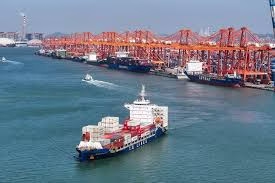China’s exports grew faster than expected in July, as manufacturers took advantage of a temporary truce in the trade war with the United States to ramp up shipments — especially to Southeast Asia — before new American tariffs take effect.
Outbound shipments rose 7.2% year-on-year, customs data showed Thursday, exceeding the 5.4% growth forecast in a Reuters poll and accelerating from June’s 5.8%. Imports also beat expectations, increasing by 4.1% compared to a forecasted 1.0% drop, suggesting a modest rebound in domestic demand.
The better-than-expected trade performance comes as global markets brace for a possible collapse of the fragile trade détente between Washington and Beijing. With the truce set to expire by August 12, U.S. President Donald Trump has signaled a fresh wave of tariffs — including a 40% duty on goods rerouted through third countries, which took effect Thursday, and the prospect of 100% tariffs on chips and pharmaceuticals. An additional 25% levy on imports from countries purchasing Russian oil is also on the table.
Despite the broader export gains, shipments to the United States dropped 21.67% in July compared to the same period last year, while exports to ASEAN countries rose sharply by 16.59%. Economists say this reflects a growing trend of Chinese goods being routed through Southeast Asian nations, but also increasing intra-regional trade.
“Southeast Asian markets are playing an increasingly central role in US-China trade,” said Xu Tianchen, senior economist at the Economist Intelligence Unit. “But it’s not just about transshipments. ASEAN countries are importing raw materials and components from China, then exporting finished products to the U.S.”
China’s trade surplus narrowed to $98.24 billion in July from $114.77 billion in June. Meanwhile, data from the U.S. Commerce Department showed that America’s trade gap with China in June fell to its lowest level in over 21 years.
As trade tensions escalate, Beijing is under pressure to rebalance its economy. Officials and advisers are urging greater reliance on household consumption to drive growth. However, challenges remain. A deflationary trend, marked by aggressive price-cutting and declining factory gate prices, is beginning to impact employment — a key concern for the government.
Economists warn that reversing deflation will be more complex than during past reform cycles, as global demand softens and geopolitical friction intensifies.
Reaching a trade agreement with both the United States and the European Union — which has also accused China of dumping low-cost goods — would give Beijing more room to implement reforms and stabilize its economy.
Still, analysts expect export growth to slow significantly in the second half of the year, under pressure from high tariffs, new U.S. restrictions on transshipped goods, and worsening ties with Western nations.



